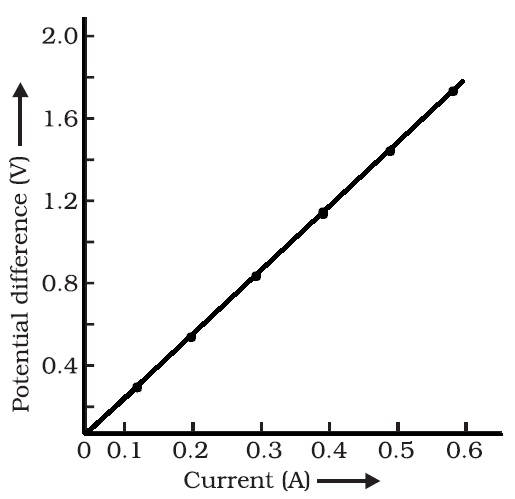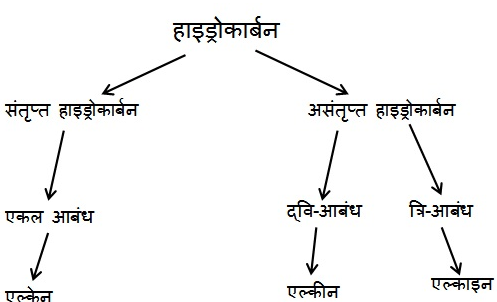विद्युत आवेश (Electrical)
घर्षणीक विद्युत (Frictional electricity): रगड़ या घर्षण से उत्पन्न विद्युत को घर्षणीक विद्युत कहते हैं |
विद्युत आवेश (Electric charge): विद्युत आवेश दो प्रकार के होते हैं |
1. धन आवेश (Positive charge): कांच कि छड को जब रेशम के धागे से रगडा जाता है तो इससे प्राप्त आवेश को धन आवेश कहते हैं |
2. ऋण आवेश (Negative charge): एबोनाईट कि छड को ऊन के धागे से रगडा जाता है तो इस प्रकार प्राप्त आवेश को ऋण आवेश कहा जाता है |
- इलेक्ट्रानों कि कमी के कारण धन आवेश उत्पन्न होता है |
- इलेक्ट्रानों कि अधिकता से ऋण आवेश उत्पन्न होता है |
विद्युत स्थैतिकता का आधारभूत नियम (Fundamental law of electrostatics):
- समान आवेश एक दुसरे को प्रतिकर्षित करती हैं |
- असमान आवेश एकदूसरे को आकर्षित करती हैं |
स्थैतिक विद्युत (Statics electricity): जब विद्युत आवेश विराम कि स्थिति में रहती हैं तो इसे स्थैतिक विद्युत कहते हैं |
धारा विद्युत (Current electricity): जब विद्युत आवेश गति में होता है तो इसे धारा विद्युत कहते हैं |
विद्युत धारा एवं आवेश (Electric Current And Charge):
जब किसी चालक से विद्युत आवेश बहता है तो हम कहते है कि चालक में विद्युत धारा है |
दुसरे शब्दों में, विद्युत आवेश के बहाव को विद्युत धारा कहते है |
विद्युत धारा को इकाई समय में किसी विशेष क्षेत्र से विद्युत आवेशों की मात्रा के बहाव से व्यक्त किया जाता है |
- विद्युत धारा किसी चालक/तार से होकर बहता है |
- विद्युत धारा एक सदिश राशि है |
इलेक्ट्रोनों का बहाव (Flowing/moving of electrons) :
इलेक्ट्रोंस बैटरी के ऋणात्मक टर्मिनल पर ऋण आवेश के द्वारा प्रतिकर्षित होते हैं तथा धन टर्मिनल पर धन आवेश पर आकर्षित होते हैं | इसलिए इलेक्ट्रोंस ऋण टर्मिनल से धन टर्मिनल की ओर प्रवाहित होते हैं | जब ये इलेक्ट्रॉन्स धन टर्मिनल तक पहुँचते हैं तो एक रासायनिक प्रतिक्रिया से वे बैट्री के अंदर स्थान्तरित हो जाते हैं और और पुन: ऋण टर्मिनल पर आ जाते हैं | इस प्रकार इलेक्ट्रॉन्स प्रवाहित होते हैं |

(एक परिपथ तथा बैट्री से इलेक्ट्रान का बहाव )
Science Notes के अपडेटेड लगातार हासिल करने के लिए हमें Facebook पर ज्वाईन करे | Click Now
चालक (Conductor) :
वे पदार्थ जो अपने से होकर विद्युत आवेश को आसानी से प्रवाहित होने देते हैं चालक कहलाते हैं | उदाहरण : तांबा, सिल्वर, एल्युमीनियम इत्यादि |
- अच्छे चालक धारा के प्रवाह का कम प्रतिरोध करते हैं |
- कुचालकों का धारा के प्रवाह की प्रतिरोधकता बहुत अधिक होती है |
कुचालक (Insulator) : वे पदार्थ जो अपने से होकर विद्युत धारा को प्रवाहित नहीं होने देते हैं वे पदार्थ विद्युत के कुचालक कहलाते हैं | उदाहरण : रबड़, प्लास्टिक, एबोनाईट और काँच इत्यादि |
चालकता (Conductivity) : चालकता किसी चालक का वह गुण है जिससे यह अपने अंदर विद्युत आवेश को प्रवाहित होने देते हैं |
अतिचालकता (Superconductivity) : अतिचालकता किसी चालक में होने वाली वह परिघटना है जिसमें वह बहुत कम ताप पर बिल्कुल शून्य विद्युत प्रतिरोध करता है |
कूलाम्ब का नियम (Coulomb’s law) : किसी चालक के दो बिन्दुओं के बीच आवेशों पर लगने वाले आकर्षण या प्रतिकर्षण बल, आवेशों के गुणनफल (q1q2) के अनुक्रमानुपाती होते हैं और उनके बीच की दुरी (r) के वर्ग का व्युत्क्रमानुपाती होते हैं |
गणितीय विधि से ,
F ∝ q1q2 ……………………. (i)
F ∝ 1/ r2 ……………………..(ii)

k एक स्थिरांक है परन्तु k का मान दो आवेशों के बीच उपस्थित माध्यम की प्रकृति पर निर्भर करता है |
k का निर्वात में आवेश 9 × 109 Nm2/C2 होता है |
विद्युत परिपथ (Electric Circuit) :
किसी विद्युत धारा के सतत तथा बंद पथ को विद्युत परिपथ कहते हैं |
विद्युत का प्रवाह (The flow of the electricity):
आवेशों की रचना इलेक्ट्रोन करते हैं | विद्युत धारा को धनआवेशों का प्रवाह माना गया तथा धनावेश के प्रवाह की दिशा ही विद्युत धारा की दिशा माना गया | परिपाटी के अनुसार किसी
विद्युत परिपथ में इलेक्ट्रॉनों जो ऋणआवेश हैं, के प्रवाह की दिशा के विपरीत दिशा को
विद्युत धारा की दिशा माना जाता है।
यदि किसी चालक की किसी भी अनुप्रस्थ काट से समय t में नेट आवेश Q प्रवाहित होता है तब उस अनुप्रस्थ काट से प्रवाहित विद्युत धारा I को इस प्रकार व्यक्त करते हैंः
I = Q/t
विद्युत आवेश का SI मात्रक (unit) कूलम्ब (C) है, जो लगभग 6×1018 इलेक्ट्रोनों में समाए आवेश के तुल्य होता है |
कूलम्ब (Coulomb) : विद्युत आवेश का SI मात्रक (unit) कूलम्ब (C) है, जो लगभग 6×1018 इलेक्ट्रोनों में समाए आवेश के तुल्य होता है |
एक इलेक्ट्रान पर आवेश = -1.6 × 10-19 कूलम्ब (C).
एक प्रोटोन पर आवेश = 1.6 × 10-19 कूलम्ब (C).
आवेश संरक्षण का नियम (Law of conservation of charge): विद्युत आवेशों को न तो उत्पन्न किया जा सकता है और न ही विनाश किया जा सकता है | इसका सिर्फ एक पिंड से दुसरे पिंड तक स्थानांतरण किया जा सकता है |
एम्पियर (Ampere): यह विद्युत धारा का SI मात्रक है | जब एक कूलम्ब आवेश को किसी चालक से 1 सेकंड तक प्रवाहित किया जाता है तो इसे 1 एम्पियर धारा कहते है |
1A = 1C/1s;
- धारा की छोटी मात्रा को मिलीएम्पियर में मापा जाता है |
- (1 mA = 10-3 A) या मिलीएम्पियर (1 μA = 10-6 A)
विद्युत धारा परिपथ में बैट्री या सेल के धन टर्मिनल (+) से ऋण टर्मिनल (-) की ओर प्रवाहित होती है |
ऐमीटर (Ammeter): परिपथों की विद्युत धारा मापने के लिए जिस यंत्र का उपयोग करते हैं उसे ऐमीटर कहते हैं।
इसे सदैव जिस परिपथ में विद्युत धारा मापनी होती है, उसके श्रेणीक्रम में संयोजित करते हैं।
गैल्वेनोमीटर (Galvanometer) : It गैल्वेनोमीटर एक युक्ति है जो किसी विद्युत परिपथ में उपस्थित धारा का पता लगाता है |
परंपरागत धारा (Conventional current) : ,परंपरागत रूप से, धन आवेशों की गति की दिशा को धारा की दिशा माना जाता है | परंपरागत धारा की दिशा, प्रवाहित होने वाले इलेक्ट्रोनों की दिशा का विपरीत होता है |
Science Notes के अपडेटेड लगातार हासिल करने के लिए हमें Facebook पर ज्वाईन करे | Click Now
वैद्युतस्थैतिक विभव (Electrostatic potential) :
Electrostatic potential at any point in an electric field is defined as the amount of work done in bringing a unit positive charge of one coulomb from infinity to that point. Its unit is volt.
Potential Difference:
The electrons move only if there is a difference of electric pressure, this difference in electric pressure is called the potential difference – along the conductor.
- This difference of potential may be produced by a battery, consisting of one or more electric cells.
- The chemical action within a cell generates the potential difference across the terminals of the cell, even when no current is drawn from it.
- When the cell is connected to a conducting circuit element, the potential difference sets the charges in motion in the conductor and produces an electric current. In order to maintain the current in a given electric circuit, the cell has to expend its chemical energy stored in it.
Potential difference between two points:
the electric potential difference between two points in an electric circuit carrying some current as the work done to move a unit charge from one point to the other.

Or

- The SI unit of electric potential difference is volt (V), named after Alessandro Volta (1745–1827), an Italian physicist.
Voltmeter:
The potential difference is measured by means of an instrument called
the voltmeter.
One volt potential difference:
One volt is the potential difference between two points in a current carrying conductor when 1 joule of work is done to move a charge of 1 coulomb from one point to the other.

Connection of voltmeter:
The voltmeter is always connected in parallel across the points between which the potential difference is to be measured.
Cells Or Battery: It is a device which helps to maintain the potential difference between two points of conductor.
Electromotive force (EMF): It is a force applied by cell or battery to produce electric current through a wire.
Ohm’s Law:
The electric current flowing through a metallic wire is directly proportional to the potential difference V, across its ends provided its temperature remains the same. This is called Ohm’s law.
According to this law.
V ∝ I or V = RI
see this volt-current graph

if potential difference is increased then electric current also increases.
And if potential difference is decreases then electric current also decreases.
Resistance:
It is the property of a conductor to resist the flow of charges through it.
Using ohm law:
Resistance = Potential difference/Current

- SI units of resistance is Ohm(Ω).
- V/I = R, which is a constant.
1 Ohm of resistance: if the potential difference across the two ends of a conductor is 1 V and the current through it is 1 A, then the resistance R, of the conductor is 1 Ω.

- The current through a resistor is inversely proportional to its resistance.
- If the resistance is doubled the current gets halved.
- In many practical cases it is necessary to increase or decrease the current in an electric circuit.
Variable resistance: A component used to regulate current without changing the voltage source is called variable resistance.
Rheostat: It is a device which is often used to change the resistance in the electric circuit.
Resistor: A conductor having some appreciable resistance is called a resistor.
Some points:
- Certain components offer an easy path for the flow of electric current while the others resist the flow.
- motion of electrons in an electric circuit constitutes an electric current.
- The electrons, however, are not completely free to move within a
conductor. - They are restrained by the attraction of the atoms among which they move.
- motion of electrons through a conductor is retarded by its resistance.
Good conductor: A component of a given size that offers a low
resistance is a good conductor.
Poor conductor: A component of identical size that offers a higher resistance is a poor conductor.
Resistance of a conductor depends on followings factors:
(i) On Length of conductor.
(ii) On Area of cross-section of conductor.
(iii) On the nature of conductor’s material.
Relation among Length, Area and Resistance:
Resistance of a uniform metallic conductor is directly proportional to its length (l) and inversely proportional to the area of cross-section (A).
This gives:
R ∝ l ……………… (i)
and R ∝ l/A ………………. (ii)
R ∝ l/A using (i) and (ii)
or,

where ρ (rho) is a constant of proportionality and is called the electrical
resistivity of the material of the conductor.
The SI unit of resistivity is Ω m.
Resistivity: Resistivity is a characteristic property of the material. S. I unit of resistivity is ohm (Ω). It is denoted by p.
- The metals and alloys have very low resistivity in the range of 10-8 Ω m to 10-6 Ω m.They are good conductors of electricity.
- Insulators like rubber and glass have resistivity of the order of 1012 to 1017 Ω m.
- Both the resistance and resistivity of a material vary (परिवर्तित) with temperature.
मिश्रधातुओं के गुण (Characteristics of alloy):
(i) एलॉय जिस धातु से बने होते है उन धातुओं की तुलना में उनसे बने मिश्र धातुओं का गलनांक अधिक होता है |
(ii) मिश्रधातु ऊँच तापमान पर भी आसानी से इनका दहन नहीं होता है |
(iii) इनका गलनांक ऊँच होता है |
यही कारण है की मिश्रधातुओं का उपयोग सामान्यत: विद्युत तापक यंत्रों में किया जाता है, जैसे – विद्युत इस्त्री , टोस्टर इत्यादि | विद्युत बल्बों की तंतु के लिए एकमात्र टंगस्टन का ही उपयोग किया जाता है | टंग्स्टन एक मिश्रधातु है जिसका गलनांक बहुत ही ऊँच होता है | जहाँ तांबा और एल्युमीनियम का सामान्य उपयोग विद्युत प्रवाह चालक के रूप में किया जाता है |
विद्युत धारा का तापीय प्रभाव:
- सेल के भीतर होने वाली रासायनिक अभिक्रिया सेल केदो टर्मिनलों के बीच विभवान्तर उत्पन्न करती है, जो बैटरी से संयोजित किसी प्रतिरोधक अथवा प्रतिरोधकों के किसी निकाय में विद्युत धारा प्रवाहित करने के लिए इलेक्ट्रानों में गति स्थापित करता है |
- विद्युत धारा को बनाए रखने में अथवा साधित्रों/उपकरणों को कार्य करवाने में स्रोत कि ऊर्जा का कुछ भाग खर्च हो जाता है जबकि शेष ऊर्जा साधित्रों/उपकरणों के ताप को वृद्धि करने में खर्च हो जाता है |
विद्युत धारा का तापीय प्रभाव: स्रोत की ऊर्जा का कुछ ही भाग उपयोगी कार्यों में उपयोग होता है | स्रोत का शेष ऊर्जा उस ऊष्मा को उत्पन्न करने में खर्च हो जाता है जो उस साधित्र/उपकरण कि ताप में वृद्धि करता है | इसे विद्युत का तापीय प्रभाव कहते हैं |
जूल तापन का नियम: किसी प्रतिरोधक में उत्पन्न होने वाली ऊष्मा दिए गए प्रतिरोधक में प्रवाहित होने वाली विद्युत धारा के वर्ग के अनुक्रमानुपाती होती है एवं दी गयी विद्युत धारा के लिए प्रतिरोध और उस समय के अनुक्रमानुपाती होती है जिसके लिए दिए गए प्रतिरोध से विद्युत धारा प्रवाहित होती है | इस नियम को जूल तापन का नियम कहते हैं |
इसे H से सूचित करते हैं |
H = I2Rt
इस नियम से किसी साधित्र या प्रतिरोधक में विद्युत धारा के तापीय प्रभाव द्वारा उत्पन्न ऊष्मा को ज्ञात किया जाता है |
इस नियम के अनुसार:
किसी प्रतिरोधक में उत्पन्न होने वाली ऊष्मा (H)
(i) प्रतिरोधक में प्रवाहित होने वाली विद्युत धारा (I) के वर्ग के अनुक्रमानुपाती होती है |
(ii) उस प्रतिरोध (R) के अनुक्रमानुपाती होती है |
(iii) समय (t) के अनुक्रमानुपाती होती है |
जूल तापन के नियम को अर्थात (H = I2Rt) को गणितीय स्तर पर समझते हैं :
मान लीजिए कि किसी प्रतिरोधक (R) में (t) समय के लिए यदि विद्युत धारा प्रवाहित की जाती है एवं इसके दोनों सिरों के बीच विभवान्तर (V) है |

विद्युत धारा के तापीय प्रभाव के कुछ अनुप्रयोग:
(1) विद्युत हीटर
(2) विद्युत इस्तरी
(3) विद्युत गीजर
(4) विद्युत टोस्टर
(5) विद्युत् बल्ब
नोट: उपरोक्त सभी साधित्र/उपकरण विद्युत धारा के तापीय प्रभाव के प्रयोग से चलायी जाती है |
विद्युत धारा के तापीय प्रभाव से विद्युत परिपथ के अवयवों पर प्रभाव :
(i) अवयवों के ताप में वृद्धि कर सकता है |
(ii) अवयवों के गुणों में परिवर्तन हो सकता है |
Science Notes के अपडेटेड लगातार हासिल करने के लिए हमें Facebook पर ज्वाईन करे | Click Now


